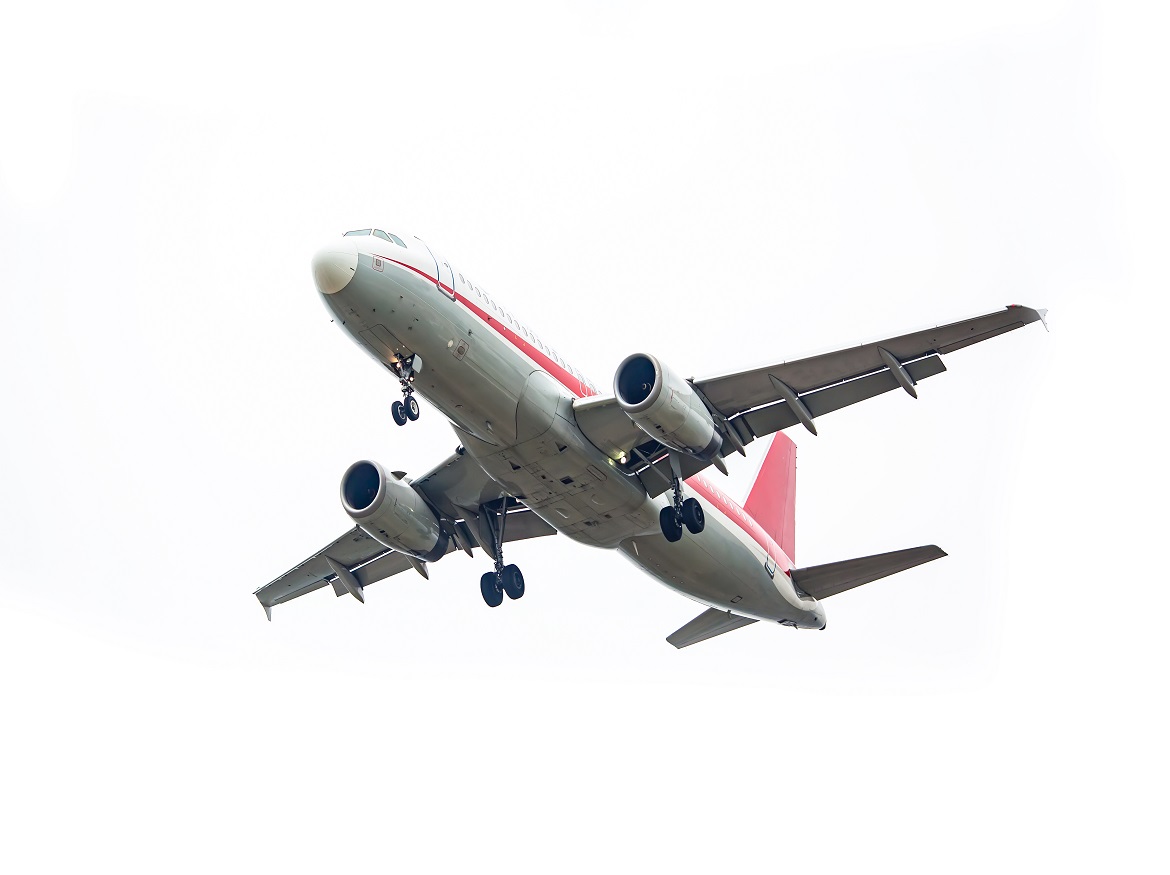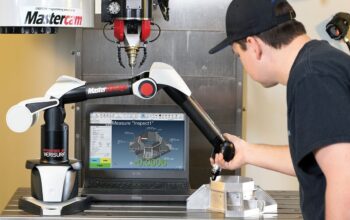A flaw, measurement inaccuracy, or little error in aerospace production—whether it’s for space travel, turboprop, or jet manufacturing—can mean the difference between a successful launch and mission failure. Due to this, aerospace businesses have the strictest standards for quality and dimensional accuracy.
It is incredibly difficult to produce aircraft parts with such strict quality requirements. Several of these parts might need to be totally discarded or reworked using conventional post-machining checks. These waste materials, manufacturing line stops, and supply chain problems for the OEM and associated suppliers might result from this scrap and rework. This will ultimately result in higher costs and delayed initiatives, which are outcomes that no market leader can accept.
The use of portable metrology tools like laser trackers, CMM arms, and 3D metrology software can significantly alleviate these problems. With the use of this technology, first items may be swiftly inspected, pre-machined dimensions can be verified, and the rough part can be positioned to help ensure that machining will proceed without error and without wasting time, energy, or materials.
A lot of aircraft components are big. As a result, these parts require substantial repair and have a very long machining time. Many operators will utilize 3D laser trackers and metrology software to check the part’s quality during the machining process in an effort to reduce the amount of rework required. This is a big advantage since it enables manufacturers to spot problems as they happen, guaranteeing that the operator can rework the item sooner and more quickly and that the part will be of high quality when it is removed from the machine. This type of in-process verification may be carried out most easily using high-quality 3D laser trackers due to the high accuracy requirements and big part size.
In a recent case study, an aerospace company discovered that using 3D laser trackers and metrology software allowed it to complete its quality control workflow “twice as quickly” as it could without them.
Finally, laser trackers can also be used to calibrate the machining equipment. Over the course of the whole machine travel, the laser tracker may monitor the difference between the actual machine position and the intended position; this data can then be utilized to modify the machining parameters for more accurate manufacture. Future machined parts will be of higher quality as a result, cutting down on cost and schedule delays.
Even after machining, putting the pieces together to create the finished craft can be difficult because even slight misalignments can result in serious flaws. In this field, portable metrology tools like laser trackers and portable CMM arms can be quite effective. Aerospace companies utilize these metrology solutions to monitor assembly quality and alter it based on real-time feedback from the metrology software in order to increase output and decrease waste. The operator may be guaranteed that the final assembly will have the correct dimensions and that they won’t need to rework it by using this technique. This even enables operators with a range of skill levels to feel confident in the execution of their responsibilities when used in conjunction with potent software with automation capabilities.
This demonstrates how and why 3D laser trackers and metrology software are crucial to the success of aerospace industries, both by guaranteeing quality matches the highest requirements and by employing smarter technologies to eliminate wasting time, scrap, and supply chain concerns.
Yet, there are a few crucial conditions that must be met for a business to successfully integrate laser trackers into its procedure. Manufacturers should take into account each of these while updating and improving their workflows.
A 3D laser tracker solution’s key aerospace process features.
1) Portability:
- The metrology solution must be portable, just like that! It must be portable to the location where the work is being done. Using a solution that requires creating a brand-new quality control lab and slowing down operations is pointless. For the most effective operations, parts must be measured and quality must be confirmed on the production line itself. For this reason, portable CMMs and laser trackers are creative solutions to the specific issue of aircraft quality.
- Aircraft components and systems are incredibly big and heavy. While the risk of damage during transit is negligible, it can be highly expensive to move these enormous goods to the inspection lab. OEMs may execute inspection or metrology-assisted assembly right where the part is, saving time, money, and risk thanks to portable measurement equipment.
- The metrology system must be able to precisely measure items in a temperature-controlled environment because manufacturing doesn’t usually take place there. The hardware, including any correction mechanism, must be able to provide the requisite accuracy over a broad range of temperatures and humidity. In order to account for the thermal expansion and contraction of materials as a result of temperature changes, smart metrology software must also include temperature compensation algorithms. Similarly, the crucial advantages of portable metrology will not be realized if a company is required to construct a unique temperature-controlled lab for its quality control solution.
2) Range:
- The portable metrology instrument must have the requisite range to measure the project’s crucial dimensions. Particularly in the aerospace industry, pieces might be enormous — sometimes up to 80 meters for launch vehicles or large planes — necessitating the use of a tool with a long range. Of course, the size of the parts may be lower for smaller operations like building turboprops or small business jets. Manufacturers must still make sure that their 3D laser trackers have the necessary range for both current projects and prospective future innovations.
- A portable CMM may be adequate for smaller pieces, but it must have the reach required to measure the total volume.
- Manufacturers will inevitably need to relocate the device to cover a sizable component or assembly. We frequently believe that shifting a device can reduce the measurement network’s accuracy. Smart metrology software, however, may use the unique uncertainty structure of laser tracker readings to dramatically increase accuracy with network bundling capabilities.
- It’s not sufficient for OEMs to estimate their metrology needs based on past projects given that most of the aerospace industry is also moving towards drones, EVTOLs, and green aircraft designs. Future aerospace companies must be open-minded about the potential products that their engineers and designers might bring to the factory floor.
3) Reach:
- A manufacturer’s gear must be able to reach to probe any crucial dimensions while still retaining the highest level of precision, in addition to the range needed for 3D laser trackers.
- It is possible to move metrology equipment around the component to improve the line of sight and measure confined spaces. However, aircraft OEMs must take into account that this could slow down the manufacturing process and take cost and ROI into account accordingly.
- To help allay these worries, some laser trackers have extensions. A second probe, for instance, can be added to a laser tracker to restrict device movement. Instead, it may be able to incorporate a PCMM arm into the coordinate system, which would reduce the amount of movement required of the component.
4) Accuracy:
- It’s crucial to check if the metrology equipment achieves the accuracy needed to inspect the key tolerances on the parts after taking the three aforementioned considerations into account.
- Any tool that is being considered must be tested and demonstrated in the actual manufacturing setting where it will be used by an organization. To ensure that 3D laser trackers meet the accuracy requirements to integrate into their processes, aerospace businesses should ensure that they engage specialists in the relevant domains, both inside and outside of their organization.
- Aerospace firms researching portable metrology solutions should ensure that the solutions they’re considering are certified to a recognized and traceable standard like ISO 10360-10 in order to comply with internal or external requirements.
5) Efficiency:
- To achieve the best productivity, using metrology software with specialized tools designed for laser tracker operations is crucial. As an illustration, a sizable digital read-out (DRO) makes the inspection and assembly processes simpler by providing real-time feedback for workers who are far from the computer.
- Huge CAD models are a result of massive parts and assemblies. The key to a productive workflow is selecting the right metrology software, which can quickly load very big CAD models in their original file format while yet enabling smooth manipulation. Users may rapidly search through the imported CAD model and remove superfluous components for inspection or assembly thanks to the ability to preserve all data from the original CAD, including the tree structure.
- Smart metrology software contains robust Geometric Dimensioning and Tolerancing (GD&T) algorithms that enable quick analysis and remove the burden from the operator, giving them more time to diagnose problems. For the operator’s convenience, metrology software with full model-based definition (MBD) enables the import of GD&T data straight from CAD models.
3D laser trackers are fantastic instruments that can be integrated into aerospace operations, in the end. They offer both organizational benefits by optimizing time savings and decreasing scrap, rework, and wasted resources as well as human-level benefits by assuring the highest degree of quality was employed on the production floor. A further way the aerospace sector can contribute to the global effort to eliminate carbon emissions is through the use of effective technologies like laser trackers.
Click on the following link Metrologically Speaking to read more such blogs on Metrology.









